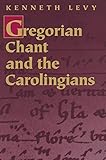Gregorian Chant and the Carolingians / Kenneth Levy.
Material type: TextPublisher: Princeton, NJ : Princeton University Press, [2022]Copyright date: ©1998Description: 1 online resource (296 p.) : 28 halftones 36 line illus. 2 tablesContent type:
TextPublisher: Princeton, NJ : Princeton University Press, [2022]Copyright date: ©1998Description: 1 online resource (296 p.) : 28 halftones 36 line illus. 2 tablesContent type: - 9780691221939
- Gregorian chants -- History and criticism
- MUSIC / History & Criticism
- Aachen
- Ad te Domine levavi
- Ad te levavi
- Aquitaine
- Aurelian of Réóme
- Ave Maria, Bamberg
- Benedict of Aniane
- Berno of Reichenau
- Blandiniensis
- Brittany
- Canosa Missal
- Charlemagne
- Chartres
- Cologne
- Cum audisset
- Desiderius
- Deus in nomine tuo
- Dijon
- Echternach
- Einsiedeln
- England
- Erit hie vobis
- Ferretti, Paolo
- France
- Gaul
- Gran
- Grenoble
- Haec dicit
- Hartker
- Homer
- Hucke, Helmut
- Jammers, Ewald
- Jerusalem
- John of Saragossa
- Korvey
- Laon
- Leander of Seville
- Liber Commicus
- Locus iste
- Lotharingia
- Louis the German
- Medicaea
- Metz
- Mount Sinai
- Nonantola
- Oravi Deum
- Passau Gradual
- Posuisti
- Rome
- Soissons
- St Amand
- Stavelot
- Tours
- Vienna
- 782.32/22/009021 21
- ML3082 .L44 1998
- online - DeGruyter
| Item type | Current library | Call number | URL | Status | Notes | Barcode | |
|---|---|---|---|---|---|---|---|
 eBook
eBook
|
Biblioteca "Angelicum" Pont. Univ. S.Tommaso d'Aquino Nuvola online | online - DeGruyter (Browse shelf(Opens below)) | Online access | Not for loan (Accesso limitato) | Accesso per gli utenti autorizzati / Access for authorized users | (dgr)9780691221939 |
Frontmatter -- Contents -- Acknowledgments -- Abbreviations -- CHAPTER 1 From Gregory to the Ottonians -- CHAPTER 2 A Gregorian Processional Antiphon -- CHAPTER 3 Toledo, Rome, and the Legacy of Gaul -- CHAPTER 4 Charlemagne's Archetype of Gregorian Chant -- CHAPTER 5 On the Origin of Neumes -- CHAPTER 6 On Gregorian Orality -- CHAPTER 7 Abbot Helisachar's Antiphoner -- CHAPTER 8 Aurelian's Use of Neumes -- CHAPTER 9 Plainchant before Neumes -- CHAPTER 10 A Carolingian Visual Model -- CHAPTER 11 Memory, Neumes, and Square Notations -- Index -- About the Author
restricted access online access with authorization star
http://purl.org/coar/access_right/c_16ec
A world-renowned scholar of plainchant, Kenneth Levy has spent a portion of his career investigating the nature and ramifications of this repertory's shift from an oral tradition to the written versions dating to the tenth century. In Gregorian Chant and the Carolingians, which represents the culmination of his research, Levy seeks to change long-held perceptions about certain crucial stages of the evolution and dissemination of the old corpus of plainchant--most notably the assumption that such a large and complex repertory could have become and remained fixed for over a century while still an oral tradition. Levy portrays the promulgation of an authoritative body of plainchant during the reign of Charlemagne by clearly differentiating between actual evidence, hypotheses, and received ideas. How many traditions of oral chant existed before the tenth century? Among the variations noted in written chant, can one point to a single version as being older or more authentic than the others? What precursors might there have been to the notational system used in all the surviving manuscripts, where the notational system seems fully formed and mature? In answering questions that have long vexed many scholars of Gregorian chant's early history, Levy offers fresh explanations of such topics as the origin of Latin neumes, the shifting relationships between memory and early notations, and the puzzling differences among the first surviving neume-species from the tenth century, which have until now impeded a critical restoration of the Carolingian musical forms.
Mode of access: Internet via World Wide Web.
In English.
Description based on online resource; title from PDF title page (publisher's Web site, viewed 29. Jun 2022)


